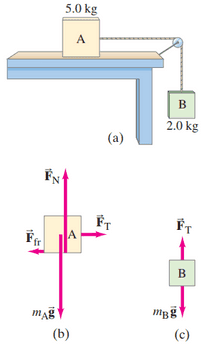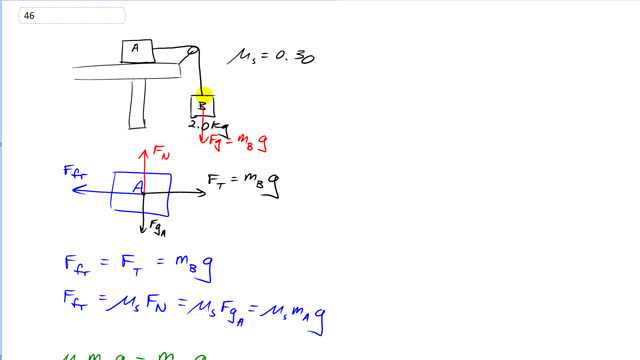
For the system of Fig. 4–32 (Example 4–20), how large a mass would box A have to have to prevent any motion from occurring? Assume .


In order to watch this solution you need to have a subscription.
This is Giancoli Answers with Mr. Dychko. When the system is at rest, the force of gravity on this hanging block B is going to equal the tension force that the string is pulling up on block B because block B is at rest. And so, the tension force that block is pulling up on block B is gonna be the same as the tension force pulling to the right on block A because tension is constant along the string. And so, that's how we can say tension force is gonna be mass B times g and this is a free body diagram of block A. So, it has the tension to the right and it'll have to have some equal amount of force to the left, and has a normal force up and gravity down. And so, the friction force equals the tension force which is the mass of B times g. And the friction force also equals coefficient of static friction times normal force. And normal force is the force of gravity on block A because the total up has to equal the total down forces. And then that's going to be muS times mA times g and then we can equate this with this one because they're both equal to the friction force. So, muS mA g equals mB g. And then we can divide both sides by muS times g. And the g's cancel. And we have the mass required for block A at a minimum is mass B, 2 kilograms, divided by the coefficient of static friction, 0.3, which is 6.7 kilograms. Now, could be heavier than this and in which case it would still not move but this is the minimum that it could be so that the friction force equals the tension, or in other words, the gravity pulling on block B.